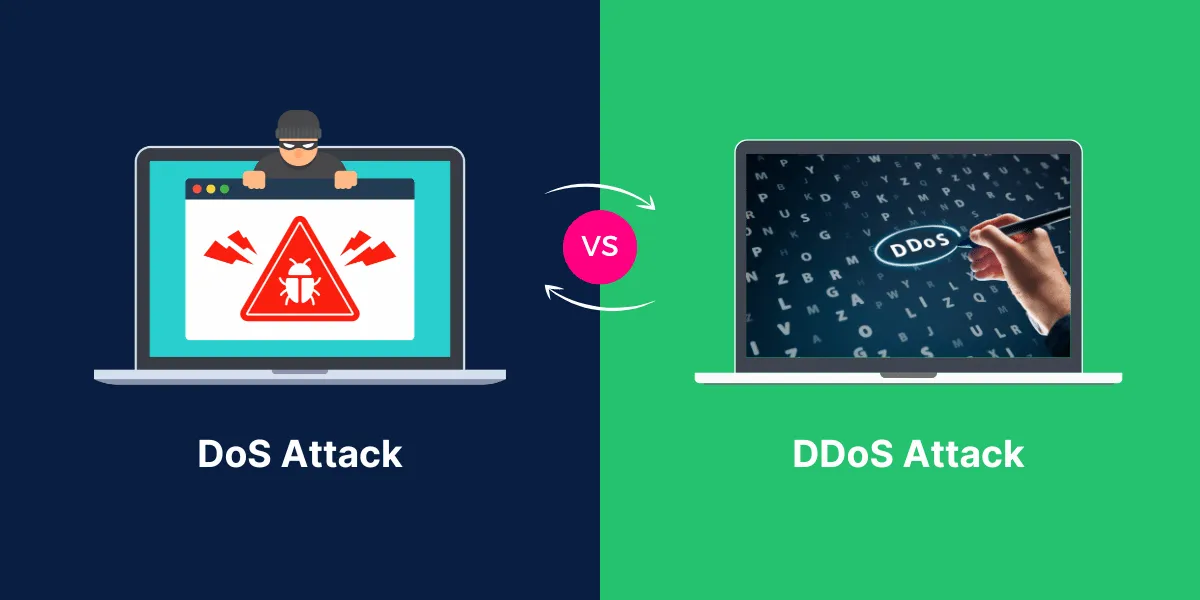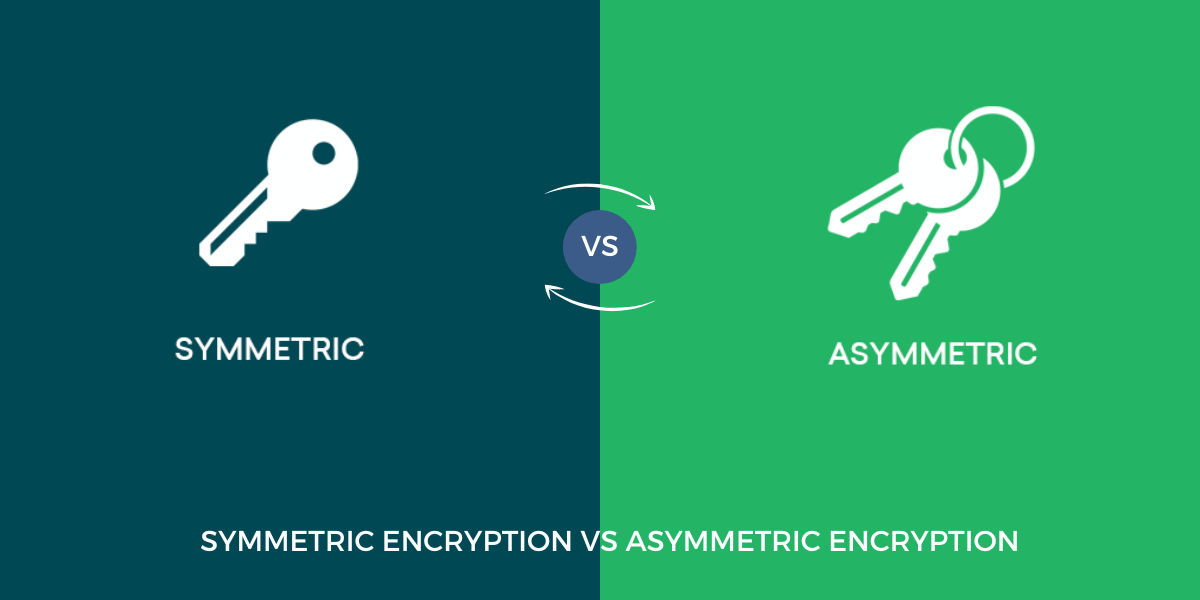Understanding Between DoS Attack and DDoS Attack
Denial-of-service attacks are some of the oldest and most common attacks on the Internet. When comparing a DoS attack vs DDoS attack, both aim to achieve similar goals but differ in scale and method. By flooding a target with traffic or requests, an attacker can overwhelm a server and make its resources unavailable to legitimate users. This can cause websites and applications to slow down or even crash, denying service to anyone trying to access them.
DOS attacks have evolved, with attackers devising innovative new ways to disrupt systems and bypass protections. Distributed denial-of-service (DDOS) attacks have become a major threat, as they leverage multiple computers to amplify the scale and force of the traffic flood.
Understanding the difference between standard DOS and DDOS attacks is important for any cybersecurity or network professional looking to defend systems from these outages. While the end goal is the same, the tactics and solutions differ substantially.
Key Takeaways
- A DOS attack overloads a system with requests from a single source, while a DDOS attack uses multiple computers to launch an attack.
- DDOS attacks are more difficult to mitigate due to the distributed nature of the attack traffic. DOS attacks can be stopped by blocking a single source.
- DOS attacks typically use up actual server resources like RAM and CPU cycles. DDOS attacks often clog bandwidth by flooding a target with requests.
- DOS attacks are easier to execute, but DDOS attacks are more powerful because of the use of multiple attacking systems.
- Anti-DDOS services, firewall rules, and bandwidth can help defend against both types of attacks. But DDOS protection requires more robust measures.
Head to Head Comparison Between DoS Attack vs DDoS Attack
|
Feature |
DOS Attack |
DDOS Attack |
|
Attack Source |
Single source |
Multiple distributed sources |
|
Attack Force |
Limited by one system’s resources |
Exponentially higher using botnets |
|
Resource Consumption |
Overwhelms server resources like RAM and CPU |
Floods network bandwidth |
|
Attack Complexity |
Technically easy to execute |
Requires botnet creation which is more complex |
|
Persistence |
Ends if single source is blocked |
Highly persistent, dynamically replaces blocked bots |
|
Attack Vectors |
Various floods and exploits |
Polymorphic, rotates attack vectors |
|
Typical Size |
Under 1 Gbps |
100 Gbps to 1 Tbps using botnets |
|
Mitigation Difficulty |
Blocking single IP is effective |
High difficulty due to distributed traffic |
|
Collateral Impact |
Focused on target |
Can affect unrelated systems |
|
Legality |
Illegal in most jurisdictions |
Highly illegal criminal activity |
|
Motivations |
Technical challenges or random disruption |
Financial, political, personal or ideological |
|
Defenses |
Firewalls, WAFs, rate limiting |
Requires robust anti-DDOS services |
A Basic Overview of Denial-of-Service (DOS) Attack
The basic premise of a Denial-of-Service (DOS) attack is simple: overwhelm a resource to the point that genuine requests cannot be processed, denying legitimate users access. This resource is most often a web server, although DOS attacks can also target other networked systems like email servers.
The most straightforward method is a network flood from a single source, where an attacker directs a firehose of network packets or connection requests at a target. This traffic swarm essentially clogs up the victim’s bandwidth, overloading the server’s ability to respond. Typical DOS network flood attacks include:
- ICMP floods: where the attacker overwhelms the target with ping packets
- UDP floods: leveraging User Datagram Protocol packets to overwhelm the target
- SYN floods: sending continual SYN packet requests to a server to open new TCP connections
- ACK floods: targeting a system with a stream of ACK packets that do not receive a response
- HTTP floods: inundating a web server with valid HTTP GET requests
Other types of DOS attacks focus on crashing a service by exploiting a specific vulnerability or design limitation. For example, an attacker may send malformed packets or specially crafted requests to trigger a bug that causes a system crash.
Targeted DOS Attacks Includes
- Ping of Death: overly large ICMP packets that cause a system crash
- Teardrop attack: fragmented packets that overwhelm TCP/IP reassembly
- Peer-to-peer attacks: exploiting P2P network vulnerabilities to overwhelm network connections
- Permanent DOS: corrupting system files or data to cause permanent damage to a system
To execute a basic network flood DOS attack, an attacker generally uses an attack tool or script to generate a high volume of requests from a single computer. This makes the attacking IP address easily identifiable. More sophisticated DOS attacks may forge the source IP of packets to help mask the attacker’s identity and location.
A Basic Overview of Distributed Denial-of-Service (DDOS) Attack
A Distributed Denial-of-Service (DDOS) attack uses multiple computers spread across the Internet to launch a coordinated flood. By leveraging these distributed botnets, DDOS attacks can substantially amplify the scale and force of the traffic.
DDOS attacks often rely on three main participants:
- Attacker: the main instigator who sets up the DDOS attack. They identify targets, compromise participant systems, and trigger the attack.
- Handlers/Masters: high-level compromised systems that can control the attack network. Handlers pass on commands from the attacker and manage the botnet.
- Zombies/Bots/Agents: a large number of compromised internet-connected devices that actually carry out DDOS attack traffic floods. These form the distributed botnet.
To build a DDOS botnet, attackers scan for vulnerable systems and use malware or exploitation to gain control. Attackers commonly leverage simple passwords, unpatched systems, and malware infections to turn victim computers into zombies. Once compromised, the attacker implants DDOS software, which allows remote control.
When the attack is launched, the agent systems start flooding the target with packets, requests, or other traffic. Because this attack traffic comes from many different sources, it is much harder to block based on source IP compared to a standard DOS attack.
Common DDOS Attack Types
- Volume-based attacks: floods using up bandwidth by sending huge amounts of TCP, UDP, and ICMP traffic. This includes amplification attacks.
- Protocol attacks: targeting and exploiting vulnerabilities in network protocols like HTTP, DNS, and SSL.
- Application layer attacks: targeting application resources and features like URLs, cookies, headers, and queries.
- Connection attacks: continually opening up new connections with the target faster than they can be closed. SYN floods are an example.
Key Differences Between DoS vs DDoS Attack
While DOS and DDOS attacks both aim to make a resource inaccessible, there are some key differences between these two forms of cyber-attacks:
- Designing apps with security built-in from the ground up
- Finding and remediating vulnerabilities early during development
- Hardening code, configurations, and architecture against risks
- Building quality and resilience to untrusted input/traffic
This proactive stance during the SDLC contrasts with application security’s reactive stance after apps are live.
Now that we’ve defined both approaches, let’s highlight some key differences.
Key Differences Between Application Security and Software Security
While application security and software security aim to protect apps from threats, they go about it in very different ways:
Attack Source
The most fundamental difference is that a DOS attack originates from a single source, while a DDOS attack uses multiple distributed sources to attack the target. With a DOS, blocking a single IP address can stop the attack traffic. However, DDOS attacks are much harder to mitigate because traffic floods from many sources.
Attack Force
By leveraging multiple computers working in concert, DDOS attacks can achieve much greater force. A single attacking computer has finite resources and limits on how much traffic it can generate. However, a DDOS botnet containing thousands of agent systems can generate exponentially more traffic and larger attacks.
Resource Consumption
A standard DOS attack typically aims to crash a service by consuming its actual server resources, such as RAM, CPU cycles, disk space, or database connections. The attacker is trying to use up the available resources on the target system.
In contrast, a DDOS generally focuses more on clogging up network bandwidth by flooding the target with requests and packets. The goal is to saturate the network capacity so that legitimate traffic cannot get through.
Attack Complexity
Executing a basic network flood DOS attack requires an attacker to have just one computer and an attack script or tool. With limited technical skills, a basic DOS can be launched against an arbitrary target. In comparison, a DDOS attack requires substantially more effort to build and control a botnet with hundreds or thousands of compromised devices.
Persistence
Because a single DOS attack originates from one source, the attacker has to keep the flood going continuously to have an impact. If the source IP is blocked, the attack stops. DDOS attacks are more persistent, as blocking one agent system still leaves many others bombarding the target. New agents can also replace blocked bots.
DDOS Attack Stages
There are a few key stages that attackers move through to set up and execute a distributed denial-of-service attack:
Target Identification
The attacker first identifies potential targets. Common DDOS targets include government agencies, banks, large corporations, and critical infrastructure providers. Attackers may choose targets based on political motivations, financial gain, personal vendettas, or to test and showcase attack capabilities.
Botnet Development
The attacker next builds out a DDOS botnet by infecting a large number of vulnerable internet-connected devices to serve as attack zombies. Methods include brute force attacks, exploiting unpatched systems, malware infections, and gaining access through weak passwords.
Command and Control
Once the botnet is built, the attacker sets up a command and control system to remotely orchestrate attacks. This allows the attacker to activate the full botnet on demand or selectively use subsets of the botnet. Centralized command channels or peer-to-peer systems may be used.
Weaponization
The attacker equips the botnet with DDOS software tools and attack scripts. This “weaponizes” the compromised devices, giving the attacker the ability to trigger different types of floods and attacks.
Attack Execution
When ready, the attacker sends orders through the command and control system instructing the botnet to launch attacks against the chosen target or targets. This initiates the DDOS flood attacks outlined earlier.
Obfuscation and Persistence
To avoid having the botnet dismantled, attackers use techniques to obfuscate command and control channels and hide the locations of compromised devices. They may also continually scan for new vulnerable hosts to build botnet capacity backup if some zombies are identified and cleaned. This makes DDOS botnets extremely resilient.
Attackers also routinely move critical botnet components like command and control servers to new IP addresses to evade discovery. Also, proxies or anonymizing services can be leveraged to mask the true source of attacks.
Attack Variation
To make mitigation more difficult, attackers can dynamically change DDOS attack types and vectors. If the target is successfully blocking a UDP flood, the attacker may switch to a HTTPS flood. This polymorphic ability means DDOS attacks can evolve to find undefended weak points.
DDOS Size and Impact
Modern DDOS attacks have grown massive in scale using botnets often containing over 100,000 compromised devices. The largest known DDOS attacks have exceeded 1 terabit per second of traffic — enough to take down nearly any target.
Some of the most notable and disruptive DDOS attacks include:
- The Github DDOS attack in 2018 flooded the platform with 1.35 TB per second of traffic. This knocked GitHub offline for several days.
- The Mirai botnet DDOS attacks in 2016 hijacked hundreds of thousands of IoT devices to intermittently shut down major sites like Twitter, Spotify, Reddit, and Netflix.
- DDOS extortion groups like Fancy Bear, Cozy Bear, and Lazarus Group threaten companies with massive attacks unless large Bitcoin payments are made.
- Major financial institutions like Bank of America, Chase, Wells Fargo, and Capital One are suffering sporadic DDOS outages that prevent customer access to banking services and cost millions in losses.
How to Defend Against DOS and DDOS Attacks
There are a variety of tactics and solutions organizations can leverage to defend against denial-of-service attacks:
- Blacklist blocking: Identify and block known attacker IP addresses at the firewall level. This works for small-scale DOS attacks but is often ineffective against large DDOS botnets.
- Rate limiting: Limiting traffic from a given IP address can help manage floods. However, this can also block legitimate user traffic mixed in.
- Web application firewalls: WAFs look for traffic anomalies and can help filter out some DDOS traffic while allowing legitimate requests through.
- Increased bandwidth: Having excess network bandwidth makes websites more resilient to volume-based floods. But this is expensive and still susceptible to extreme traffic floods.
- CDNs: Content delivery networks spread traffic across many geographic regions. This prevents localized network floods from taking down sites.
- DDOS mitigation services: Companies like Cloudflare, Akamai, Imperva, and Radware offer DDOS protection services that absorb and filter attack traffic on behalf of clients.
- Cleaning botnet infections: Identifying and removing malware from compromised devices breaks an attacker’s ability to orchestrate large-scale DDOS attacks. But this is extremely challenging.
Final Thoughts
Denial-of-service attacks have evolved from basic flooding to complex botnet-driven campaigns capable of taking down nearly any target. DOS attacks overwhelm systems with requests from a single source, while DDOS attacks coordinate floods from multiple distributed sources. Though the result of denying service is the same, DDOS attacks pose a greater threat.
The distributed botnet structure makes DDOS attacks more difficult to trace and mitigate. DDOS traffic can also be highly polymorphic, adapting to evade defenses. With extortion campaigns growing and DDOS capabilities expanding, organizations must implement robust anti-DDOS protections like traffic scrubbing services, load balancing, and botnet monitoring.
Understanding the difference between DOS and DDOS informs defensive strategies against these dangerous denial-of-service disruptions.
Frequently Asked Questions
What is more dangerous, DOS or DDOS?
DDOS attacks are generally considered more dangerous and disruptive than standard DOS attacks. Their distributed nature makes them much harder to mitigate compared to blocking a single source. DDOS attacks can achieve exponentially greater force using botnets with thousands of attacking systems.
How long does a DDOS attack last?
Depending on the attacker’s resources and motivations, DDOS attacks can last several minutes to over a week. Some extortion DDOS campaigns throttle traffic on and off for days to maximize disruption. Other malicious actors may only attack for a short burst before switching tactics or targets.
Is DOS illegal?
Launching a DOS or DDOS attack is almost always illegal due to computer hacking laws that prohibit disrupting or gaining unauthorized access to computer systems. Law enforcement agencies like the FBI often get involved in investigating denial-of-service cybercrimes.
What’s the difference between DOS and crash?
A denial-of-service (DOS) attack aims to make a machine or resource unavailable through flooding. A system crash occurs when a software or hardware failure causes a computer to abruptly stop working. So, a DOS is specifically an attack, while a crash may just be an unintentional system failure.
How do you stop a DDOS attack?
The most effective way to stop an ongoing DDOS attack is to use a DDOS mitigation service or web application firewall to filter out the attack traffic while allowing legitimate connections through. DDOS protection services from vendors absorb and scrub traffic before it reaches your network perimeter.
Is DDOS a virus?
No, a DDOS attack is not a computer virus. There is no malware or self-replicating code involved. However, DDOS attacks are often carried out by botnets created through malware infections or by exploiting compromised systems. So malware enables many DDOS campaigns but is not directly part of the attack.
What happens when a DDOS attack is successful?
When a DDOS attack succeeds, the target website or server being flooded is unable to respond to legitimate requests, and users cannot access it. A successful DDOS attack will make the victim unreachable to its intended users for the duration of the traffic flood or until mitigations are put in place.

Priya Mervana
 Verified Web Security Experts
Verified Web Security Experts
Priya Mervana is working at SSLInsights.com as a web security expert with over 10 years of experience writing about encryption, SSL certificates, and online privacy. She aims to make complex security topics easily understandable for everyday internet users.



